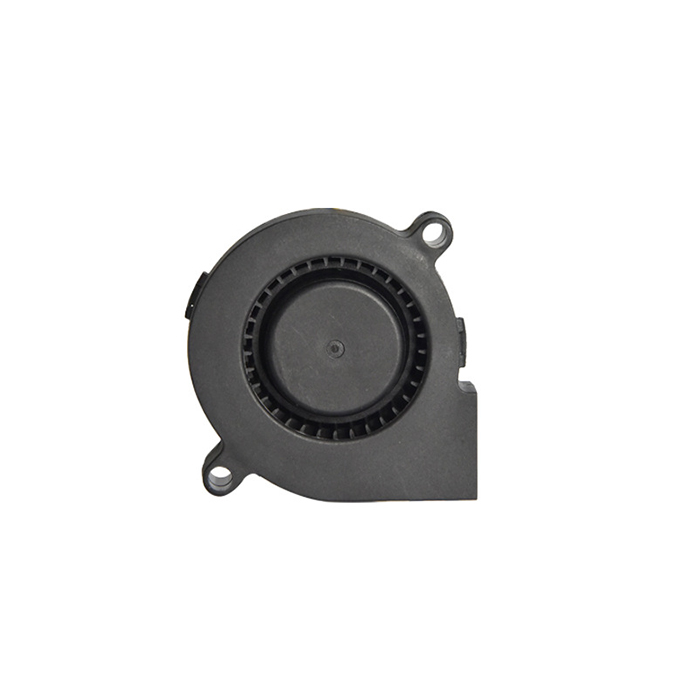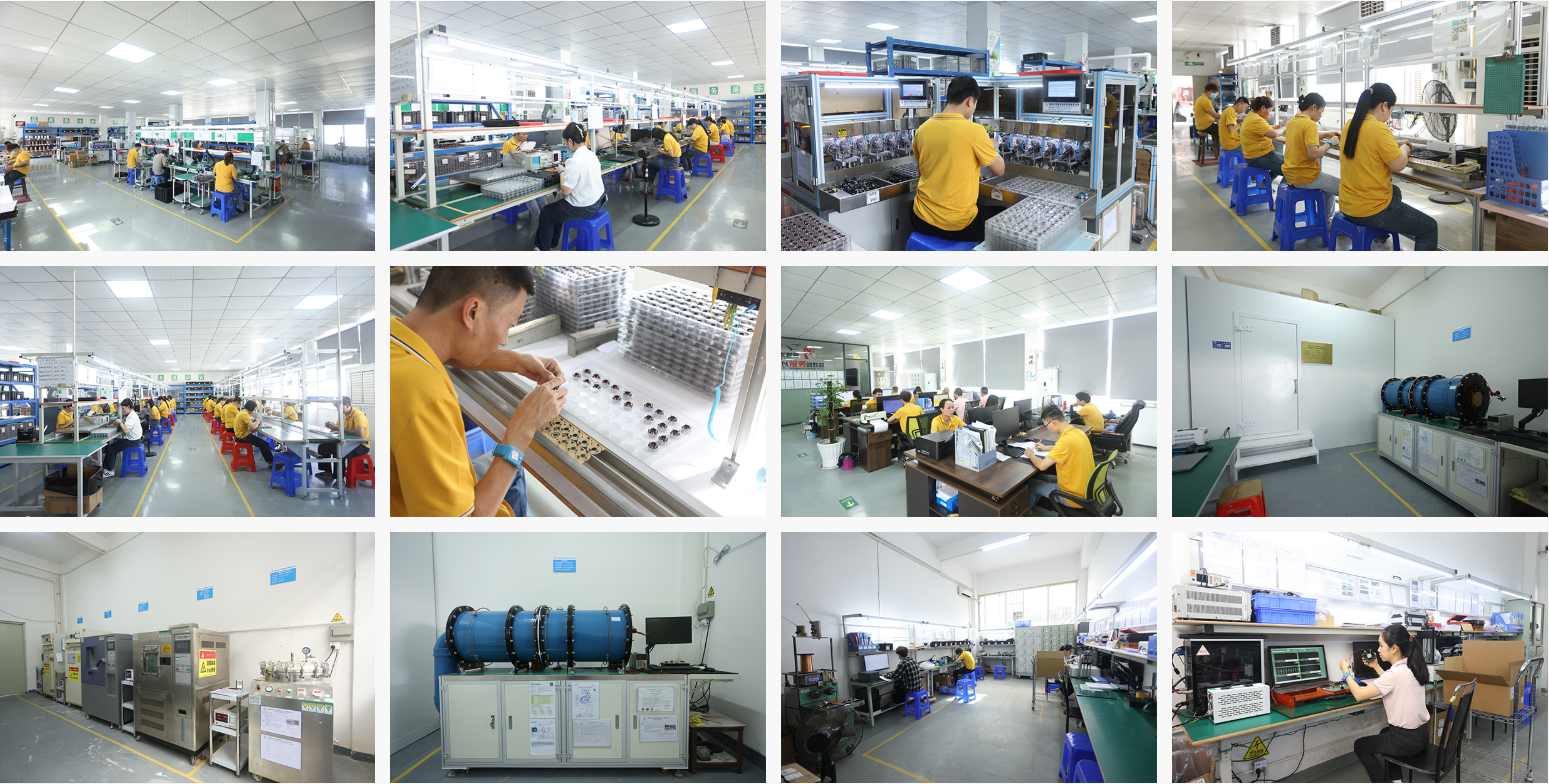Blower is a kind of general machinery used for conveying gas or gas mixture. According to the different working principles, blowers can be divided into two categories, respectively, positive displacement and centrifugal, of which as for positive displacement, we mainly use Roots blowers and screw blowers. As for centrifugal, the most common are multi-stage centrifugal fans, single-stage centrifugal fans and gear growth blowers.
Roots blower is a volumetric rotary blower, its advantages are low noise, uniform gas supply, so it has been widely used in many industrial fields. The multi-stage centrifugal blower has the disadvantages of large volume, heavy mass and poor flow regulation performance, so its use will be limited in some specific application scenarios, such as large industrial equipment.

Single-stage gear blower adopts three-way flow design theory, and its efficiency is greatly improved, so it is widely used in some application scenarios that require high efficiency, such as air purification equipment. The air suspension blower uses dynamic pressure air suspension bearings to achieve rotating shaft suspension, without lubrication, energy saving of more than 30%, noise of about 80 decibels, so it is widely used in some application scenarios that require energy saving and low noise, such as medical equipment. The magnetic suspension blower uses active magnetic suspension bearings to achieve rotor suspension, without lubrication, energy saving of more than 30%, noise of about 80 decibels, so it is widely used in some application scenarios requiring energy saving and low noise, such as aerospace equipment.
The engine, gearbox and other parts of a car generate a lot of heat when they work, and cooling fans are used in the cooling system of a car to keep the engine running properly.
Computer's CPU, graphics card, motherboard and other hardware will generate a lot of heat when running under high load, cooling fans are widely used inside the computer to help emit heat and ensure the norm...
Home appliance cooling fans are used in a wide range of applications, including TVs, computers, stereos, refrigerators, air conditioners and other various electrical devices. When using home appliance cooling f...
As data workloads increase, cooling becomes more critical in rack servers, blade chassis, storage units, and switches.
● Remove heat from CPUs/GPUs
● Prevent thermal throttling
● Improve energy efficiency metrics (like PUE)
● High static pressure to push air through tight spaces
● Smart fan control via BMC or IPMI
● Hot-swappable design
● Check RPM logs weekly
● Replace filters monthly
● Monitor for early signs of bearing noise or vibration
● Fans with RPM control and tachometer outputs
● Dual-ball bearing models with 70,000-hour lifespan
● Redundant fan module assemblies
We were founded in 2009, covering an area of 3500 square meters, with the most advanced experimental equipment and professional testing equipment. We have 150 employees and have passed ISO9001, 14001 management system certification and IATF16949 vehicle specification certification. Our products are distributed all over the world, and we have formed suppliers in several industries including photovoltaic energy storage, communication equipment, 3D printing, automotive, medical equipment, and charging equipment.

In today's increasingly technology-driven world, thermal management is no longer just an engineering afterthought—it is a mission-critical requirement. At the heart of thermal control lies the unsung hero of the hardware world: the cooling fan. Whether it's safeguarding life-saving medical equipment or keeping power tools functional on a summer construction site, cooling fans are vital to ensuring performance, longevity, and safety across countless applications.
Cooling fans are designed to move air efficiently through systems, extracting heat generated by internal components and maintaining safe operating temperatures. These fans are not one-size-fits-all; each industry demands a different level of precision, durability, airflow, and noise control.
Let’s explore how cooling fans are tailored to fit the unique thermal needs of 10+ high-impact sectors.
Medical devices—from MRI machines to portable infusion pumps—require absolute thermal stability. Fluctuations in temperature can affect accuracy or even lead to equipment failure. Cooling fans used in these environments must deliver powerful airflow with minimal noise and without compromising sterility.
● Keep internal electronics of diagnostic machines within safe operating ranges
● Prevent overheating in compact, portable equipment
● Operate silently in patient-care areas
● Anti-bacterial coating and low noise (<20 dBA)
● Compliance with FDA and ISO13485 standards
● Maintenance-free bearing systems for long-term reliability
Thermal control directly affects printing accuracy in 3D printers. Components like the extruder and controller board require targeted, controlled airflow to avoid heat-induced artifacts and system instability.
● Nozzle and hotend cooling
● Stepper motor temperature regulation
● Controller and power board heat dissipation
● Prevents heat creep and filament jams
● Ensures consistent layer deposition
● Reduces noise for home or office environments
In telecom networks, any downtime is critical. Routers, switches, base stations, and fiber terminals run 24/7 and must stay within strict thermal limits to prevent failures or signal loss.
● High airflow in compact form factors
● Redundancy support in critical systems
● IP54+ ratings for outdoor environments
● Dust filters should be cleaned or replaced regularly
● Temperature logs help detect declining fan performance
● Outdoor fans must withstand temperature fluctuations and rain
Electronics onboard airplanes, satellites, and UAVs face extreme altitudes, high vibration, and limited airflow. Here, every gram and cubic centimeter counts.
● Avionics systems cooling
● In-cabin electronics
● Ground radar and satellite hardware
● Operating in low-pressure conditions
● Managing vibration and shock
● Ensuring redundancy in mission-critical systems
● Lightweight magnesium or aluminum casing
● Wide temperature ranges (-40°C to +90°C)
● Manufactured under aerospace-grade quality controls
Industrial control cabinets, robots, and PLC units can experience constant high loads and temperature stress. Failures here can mean production halts or safety hazards.
● Keeping PLCs, sensors, and drives within operating temperature
● Extracting heat from factory control cabinets
● Cooling IGBT units in motor drives
● Exposure to dust, oil mist, and moisture
● Need for maintenance-free fans in 24/7 operations
● Choose fans with sealed bearings and IP-rated housing
● Implement alarms for fan failures
● Replace fans preventatively every 18–24 months
From cordless drills to electric lawn mowers, high-power tools need rugged fans to keep batteries and motors cool without adding weight or complexity.
● Manage battery temperatures to prevent thermal runaway
● Cool motors to avoid coil burnout
● Prevent internal plastic deformation under load
● High resistance to shock and vibration
● Water and dustproof (IP65+)
● High-torque airflow with compact footprint
As vehicles become smarter and more electric, they carry more heat-generating components—battery packs, infotainment systems, ADAS sensors. Cooling fans keep everything operating safely.
● In EV battery management systems
● In dashboard displays and inverters
● Inside engine control units (ECUs)
● IATF16949 certified
● Automotive-grade materials and testing
● Compact, low-noise designs with PWM speed control
Home appliances like ovens, fridges, purifiers, and even entertainment systems use fans to cool their internal components or distribute airflow evenly.
● Accelerate cooking in convection ovens
● Remove excess heat from compressors
● Maintain clean airflow in air purifiers
● Ultra-quiet operation
● Heat-resistant fan blades
● Long operational life
Battery management systems in energy storage units generate heat that, if not removed, can reduce storage capacity or cause fires. Cooling fans help mitigate that risk.
● Thermal control in Li-ion battery enclosures
● Inverters and power conversion hardware
● Off-grid solar controller cabinets
● Operate in extreme temperatures
● Energy-efficient DC motors
● Long lifespan under high heat conditions
Regardless of the application, proactive maintenance maximizes the fan’s performance:
● Dust Removal: Clean fan blades and vents monthly using compressed air
● Bearing Health: Use sealed or fluid-dynamic bearings for longer life
● Monitoring: Use tachometer signals or noise levels as performance indicators
● Replacement Cycles: Most fans should be replaced every 2–3 years in continuous operation
At our company, we engineer cooling fans not only for high airflow but for high reliability, custom compatibility, and industry certification. Here's why global clients trust our products:
● ISO9001, ISO14001, and IATF16949 certified production
● Over 150 employees with full R&D and testing facilities
● Full range from 25mm to 172mm in AC/DC variants
● Customization for waterproofing, dust resistance, noise reduction, and PWM control
We manufacture for industries ranging from medical to aerospace, delivering precision-engineered, high-performance fans that are built to last and tested to outperform.
From a 3D printer in a maker’s workshop to a base station on a mountain, our fans operate silently, efficiently, and reliably. With every industry facing unique thermal challenges, our engineering team crafts fan solutions that do more than cool—they enable innovation, prolong system life, and protect investments.
Looking for the right thermal solution? Let our fans do the heavy lifting—quietly, efficiently, and relentlessly.
Axial Fans: The Ultimate Cooling Solution for Modern ElectronicsIn the rapidly advancing world of electronics, efficient thermal management has become increasingly critical. From powerful data servers to compac...
Is your equipment overheating? Are you tired of cooling solutions that are too loud, too inefficient, or simply not up to the task? In the world of thermal management, one component stands out for its versatili...
In modern life, cooling fans have become indispensable equipment in our lives and work. Whether in home appliances, computers, automobiles or industrial equipment, cooling fans play a vital role. How exactly do...
The installation and maintenance skills of cooling fans can not only help users ensure the normal operation of the equipment, but also effectively extend the service life of the fans and reduce the frequency of...
Cooling fans are indispensable heat dissipation components in many electronic devices and mechanical systems and are widely used in computers, servers, automobiles, and various industrial equipment. The noise p...
Cooling fans are important components in applications such as electronic equipment, automobiles, and industrial machines, and determine the heat dissipation efficiency and stable operation of the equipment. As ...